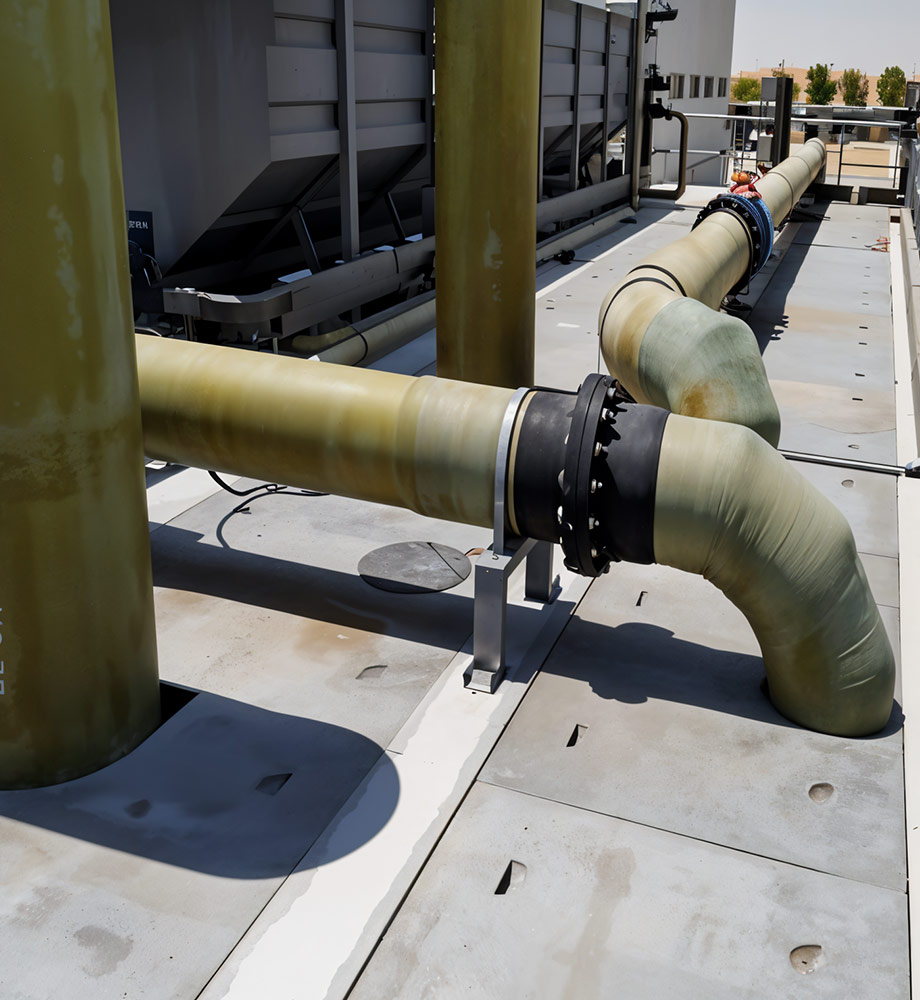Key Features
- Fiberglass Reinforced Construction: Made from resins (e.g. vinyl ester, polyester) reinforced with glass fibers, achieving both chemical resistance and structural integrity.
- High Strength and Low Weight: FRP ducts have comparable or better tensile strength than steel but weigh far less, simplifying support structure design.
- Smooth Internal Surface: Reduces friction and particulate buildup, improving airflow.
- Modular Design: Sections, elbows, tees, and transitions join easily with gasketed flanges or clamps for airtight seals. Specialized liners or gaskets can handle temperature and abrasion.
- Flame and Smoke Rating: Many FRP duct systems meet Class 1 flame spread ratings for safe indoor installation (see UL94 ratings in [38†L52-L55]).
Benefits
- Corrosion Immunity: FRP ducts resist all common acids, alkalis, solvents and salts. They never rust or pit in environments such as wastewater treatment, pulp & paper, swimming pool HVAC, or sewer vents.
- Longevity: With proper installation, FRP duct systems last decades without coating or lining repair. This gives lower life-cycle cost than galvanized or PVC ducting.
- Versatility: Used indoors or outdoors, aboveground or buried. FRP tolerates freeze-thaw cycles and extreme hot/cold weather.
- Ease of Installation: Lightweight sections speed up assembly (e.g. “Grip Seal” joints allow quick clamp installation). No painting or galvanizing needed.
Applications
FRP ducting is ideal wherever corrosive or moisture-laden air must be moved. Common uses include chemical plant exhausts, solvent vapor conveyance, underground drainage vent lines, coastal HVAC, and corrosive wet scrubber piping. It’s also used in acid fume handling, refrigeration exhaust, and mining ventilation where metal ducts would quickly degrade.
Technical Specifications
FRP ducts are specified by inner diameter, pressure rating (vacuum or pressure in inches of water column), and resin type. Standard thickness (wall laminate schedule) is chosen based on span and pressure. Flange and gasket types (EPDM, neoprene, etc.) are selected to match chemical exposures. Industry standards (for example, ASTM D3262 for FRP gas piping) are often followed.
Unique Selling Points
The USP of FRP duct systems is lifetime corrosion protection. For example, they maintain full pressure rating even after years in 100% humidity or salt spray—conditions that would destroy metal ducts. The GRP material also provides some thermal insulation to the airflow. Additionally, FRP ducts do not transmit electricity (non-conductive), enhancing safety in flammable environments. Many systems come with turnkey installation kits, and specialty features like backflow dampers or fan integrated sections complete the corrosive-air handling solution.

